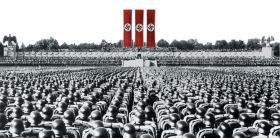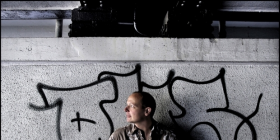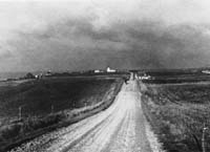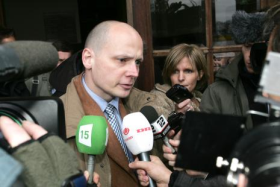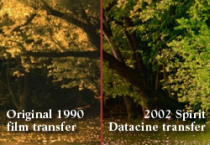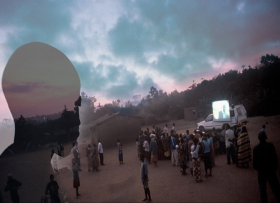På billedet ser vi familieportrætter af den alvorlige slags fra fotografen dengang. En kvindestemme, ældre, siger på vestjysk: Det er fredag den anden januar 1977, og jeg føler mig sund og rask… Portrætterne fortsætter i overtoninger, en lille pige bliver ung pige, ung kvinde, ung kone. Og stemmen fortsætter sin optegnelse. En mellemting mellem dagbog og tilbageskuende vurdering, testamente: Der er sket meget i min tid…Og den sammenligner den nye usikkerhed. Vi er i det moderne. I et kontrolrum et sted i USA, har kvinden læst, er der altid to til stede. Hvis den ene skulle bryde sammen og ville trykke på knappen, skal den anden kunne gribe ind. Sådan også på Cheminova, vores kemifabrik. Der er der også to, skulle den ene falde i søvn. For mennesket må selv tage ansvar og ikke give Gud skylden for ulykkerne, det selv har skabt grundlaget for.
Vogels saxofon begynder på et tema. Gruszynskis store landskabsbillede oppefra som hos Søndergaard viser os stedet, vi er. Vestjylland. Refleksionen over kemifabrikken nærmere hvor. Det må være Bovbjerg. Kameraet panorerer til vejen. To små kvindeskikkelser aser på cykler opad bakken. Så helt tæt på, især det ene ansigt. Nu ved jeg hvem. Stemmens lyd bekræfter: Min kæde er hoppet af, siger hun. De to får cyklen vendt, forsøger at ordne det med kæden. Med dametasken dinglende ved håndleddet påtager hun sig opgaven. Hun er sej, men må opgive, vel på grund af den lukkede kædekasse. Veninden vender cyklen. Stort landskabsbillede med kirken. Nu lav horisont. Saxofontemaet fortsætter, mens billedet viser os gårdspladsen, et blik ud forbi julestjernen og porcelænshesten i vindueskarmen, ud på gårdspladsen, jeg er kommet ind fra. I det samme er musiktemaet forbi. En telefon ringer. En mand ligger og sover på divanen med avis over ansigtet. Han tager telefonen, spiller dilettant som i forsamlingshuset. De snakker om kæden, nej, han skal ikke hente hende. Nej, det behøves ikke. Jeg kan trække hjem. Det er så godt vejr. Han vender sig og sover videre.
Åh, tænker jeg. Nu kommer så historien om et leve livet midt i dette landskab i samtale med Gud. Så fremmedartet og så nært alligevel. Guds plads, menneskets plads, egne kræfter. En tilværelse med tingene i orden. Historien begynder her – kan ses igen og igen, som en gentagen række af ens dage. At kæden hopper af, er her ikke en talemåde, men et problem, som klares…
Fra: http://www.dfi.dk/tidsskriftetfilm/16/denstoredok.htm
Jon Bang Carlsen: Jenny, 1977. 38 min. VHS lånt fra Herning Bibliotek.




